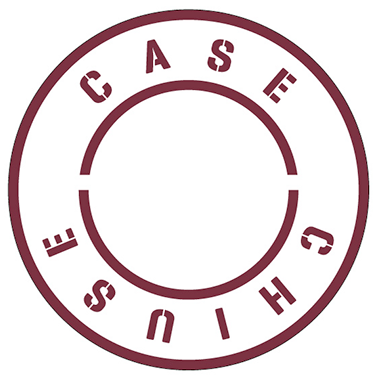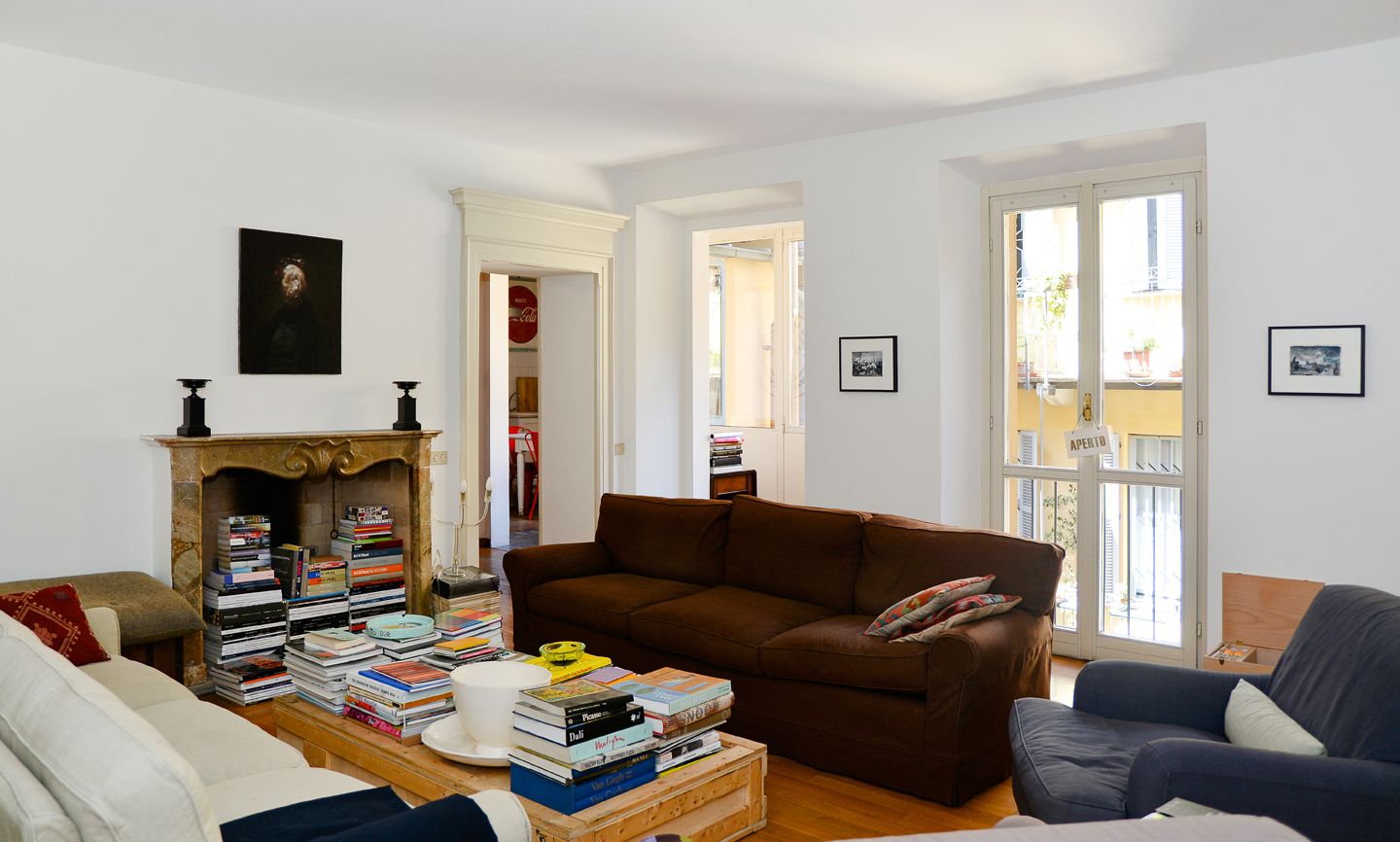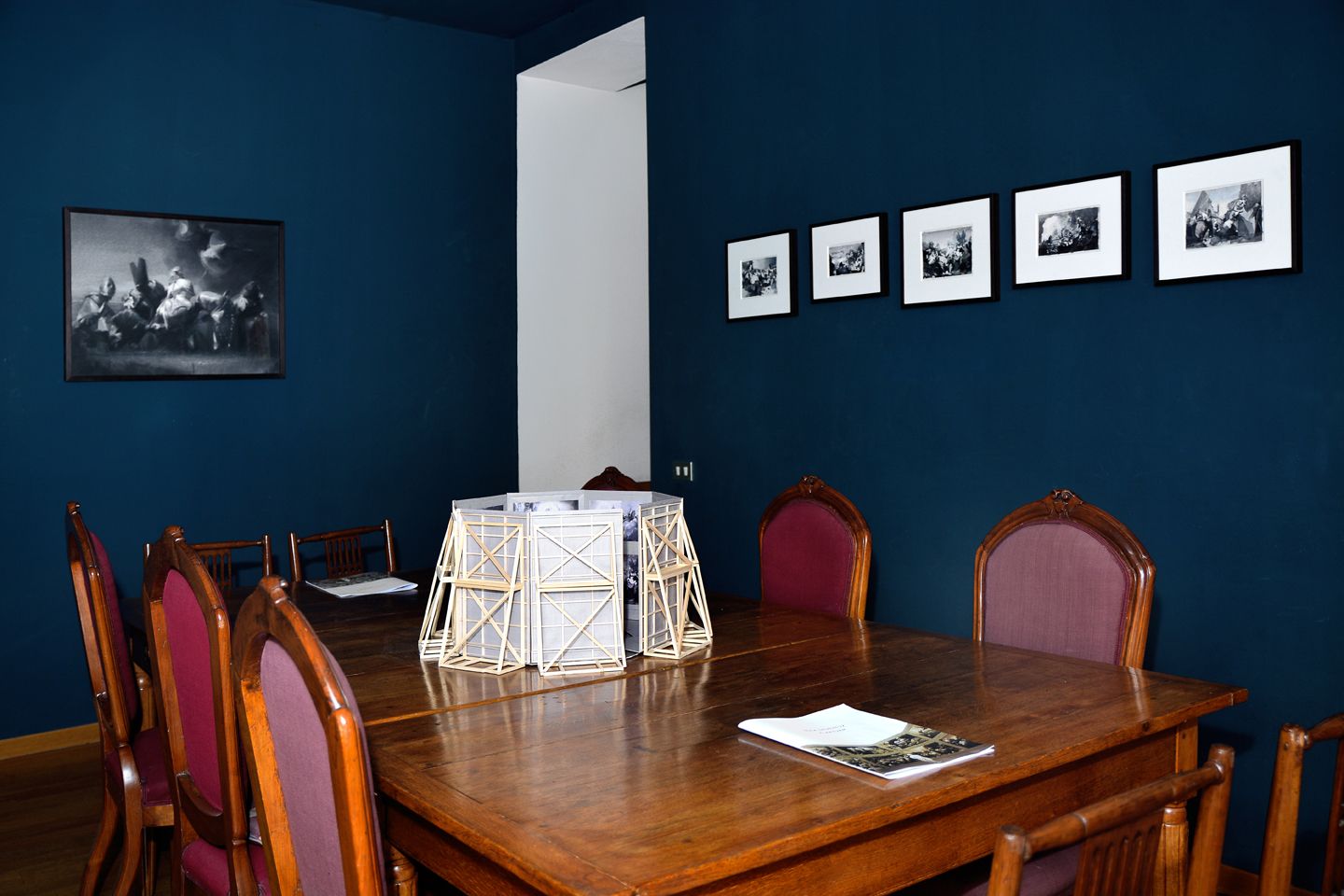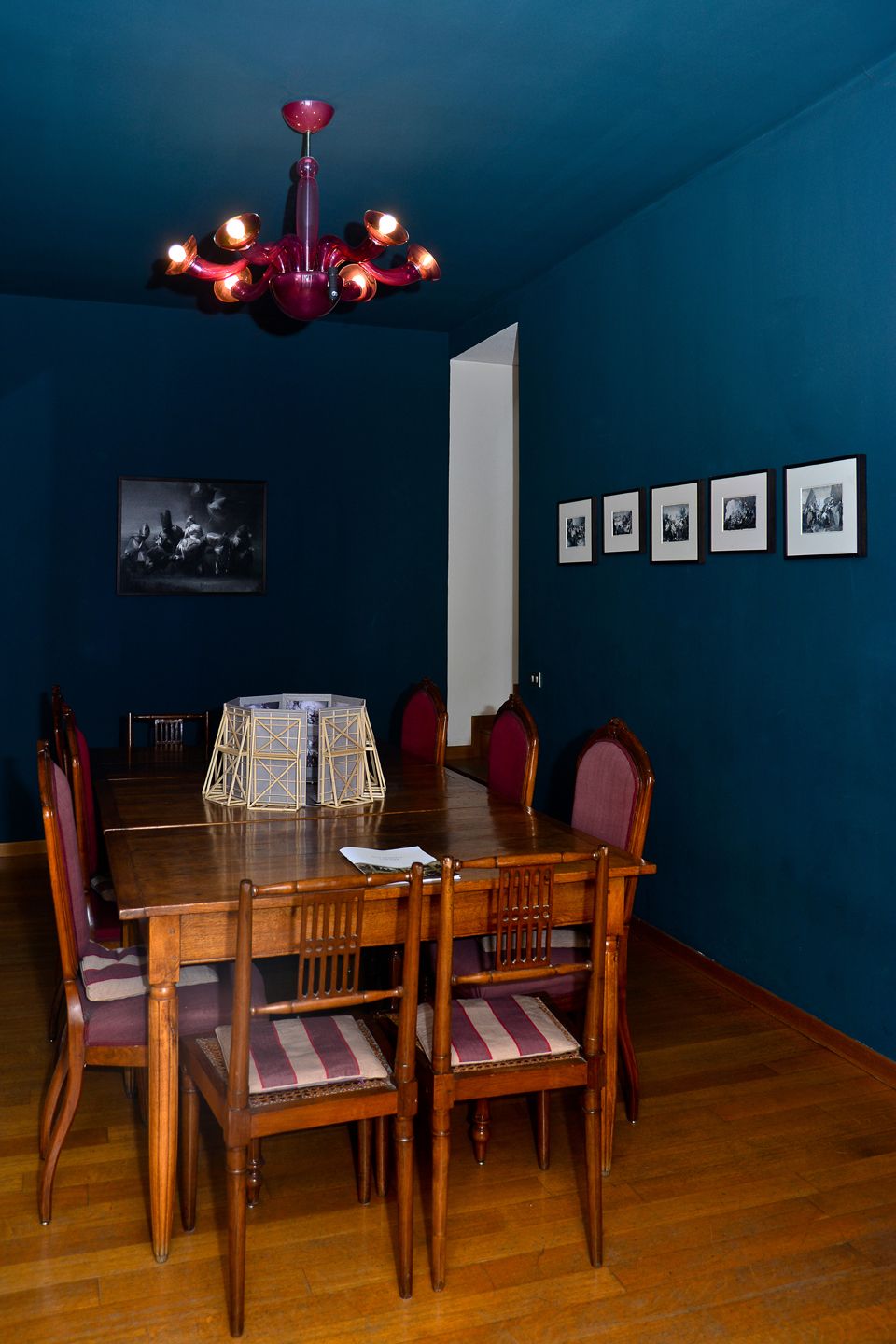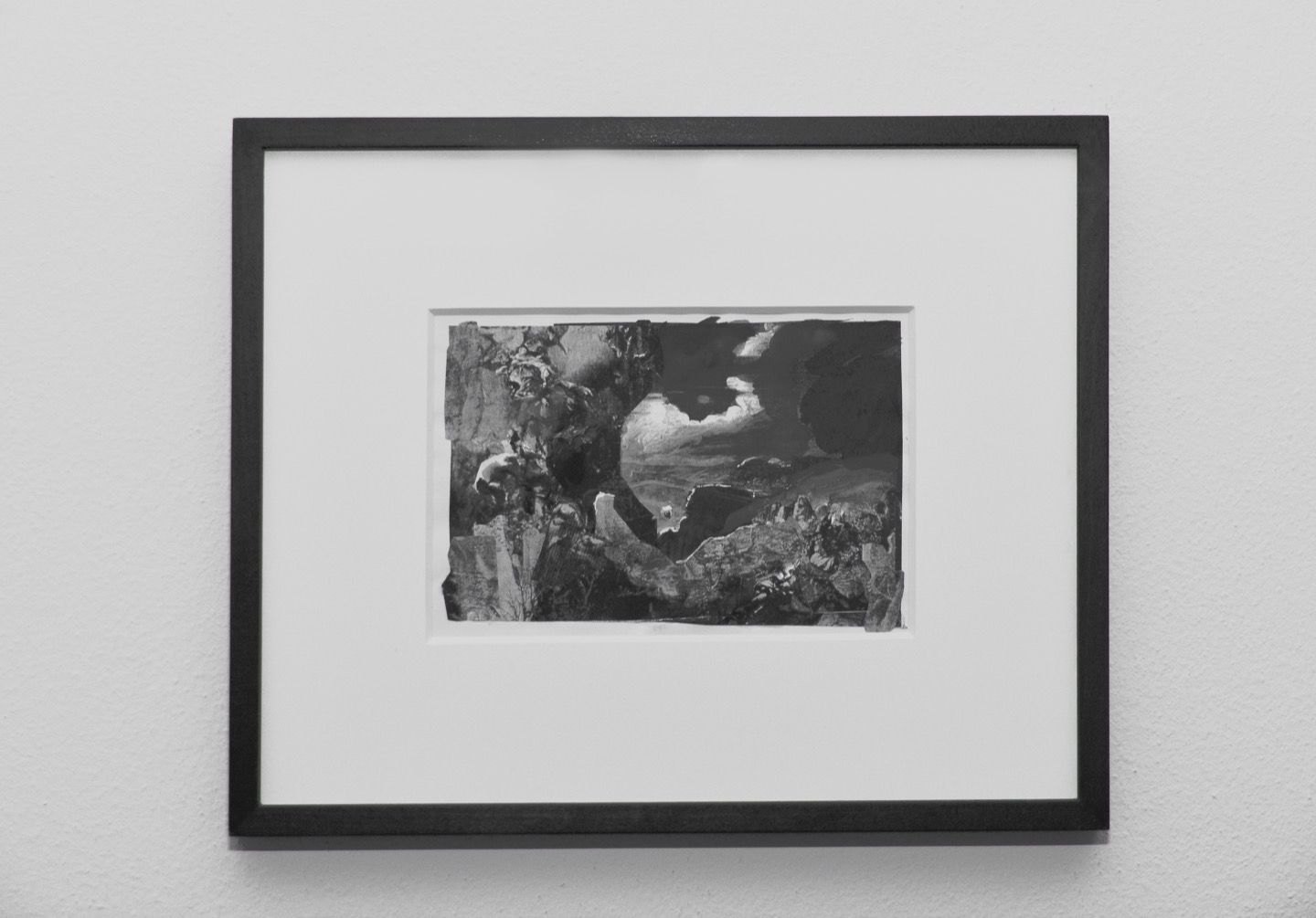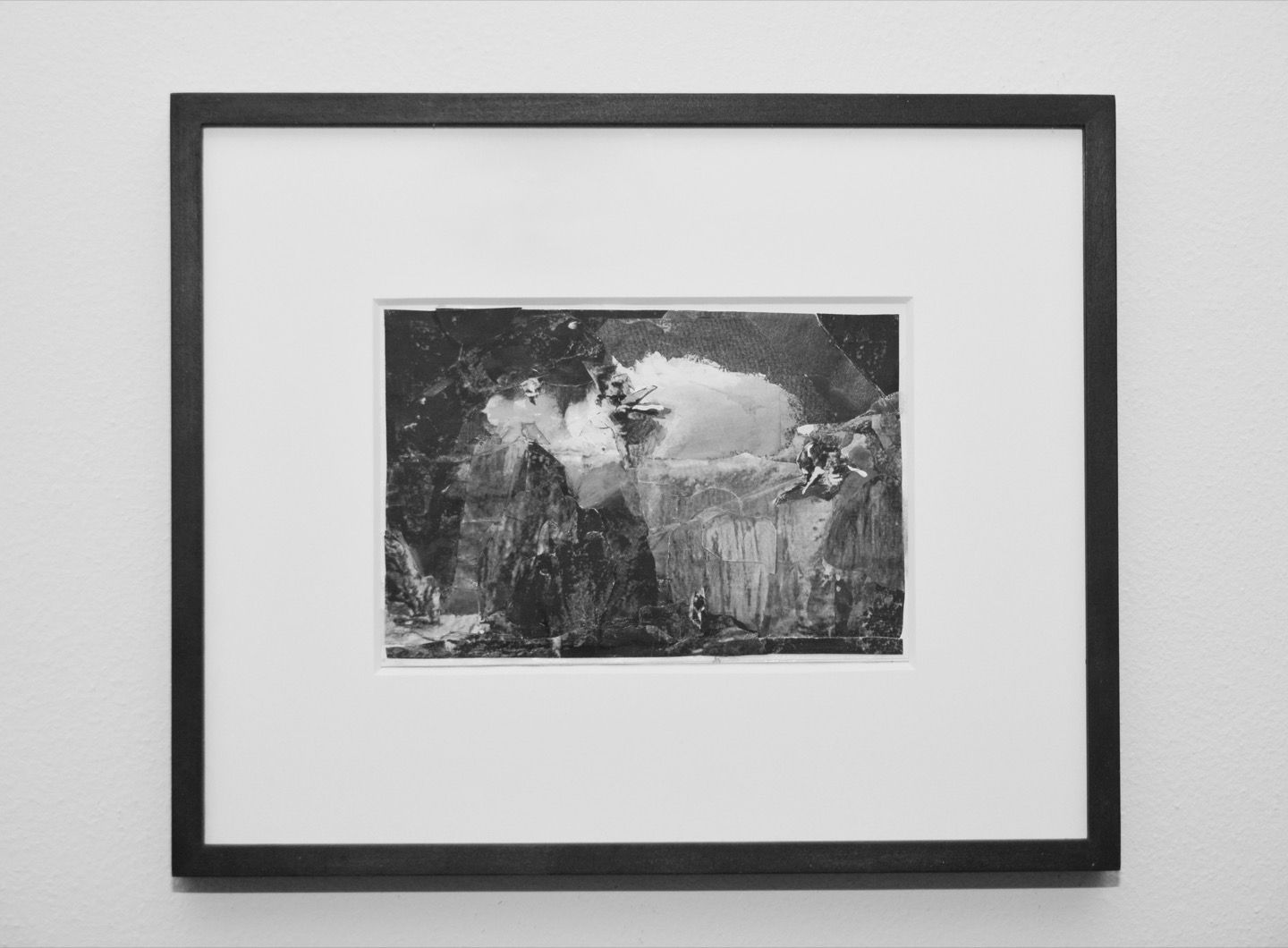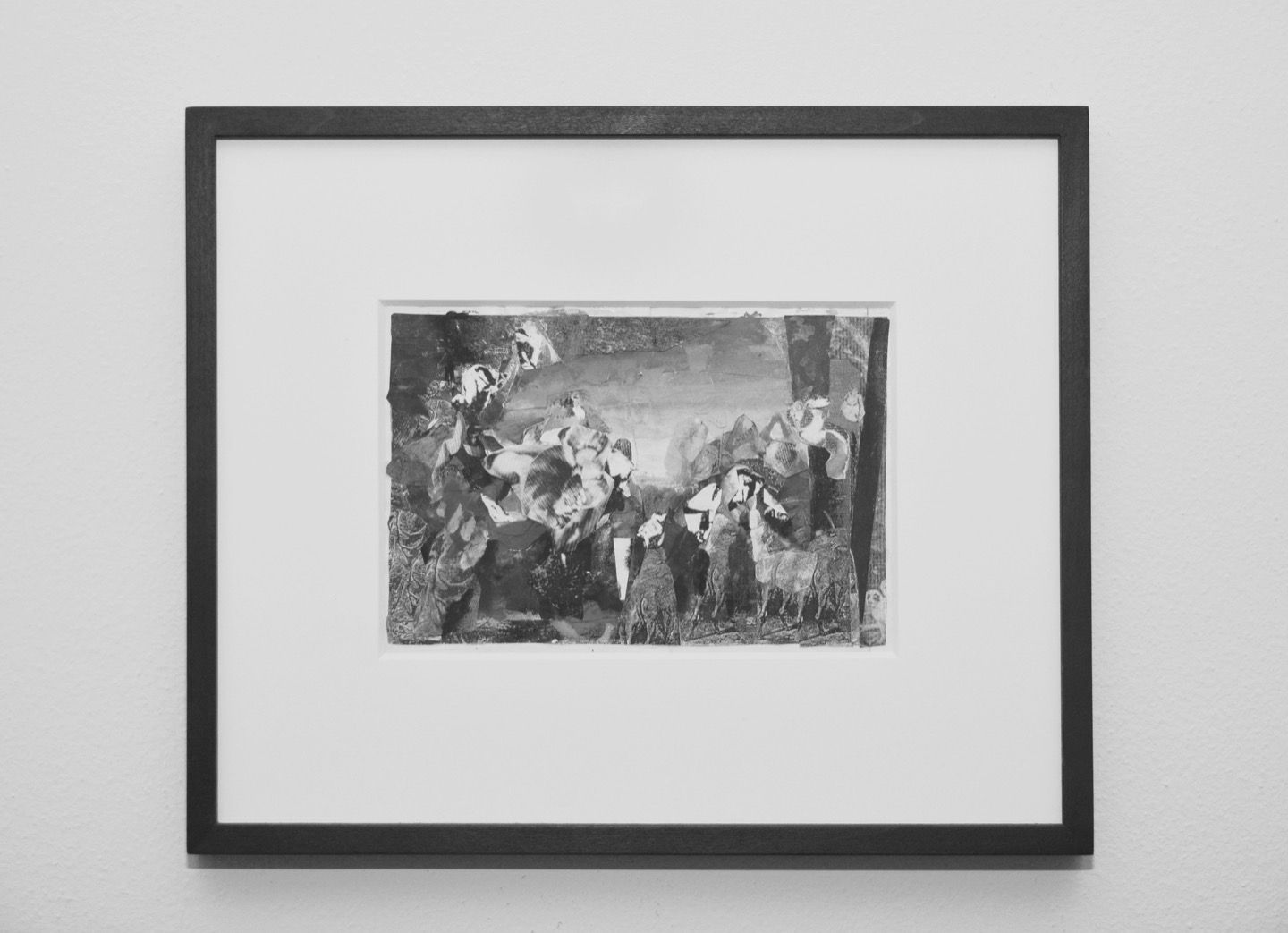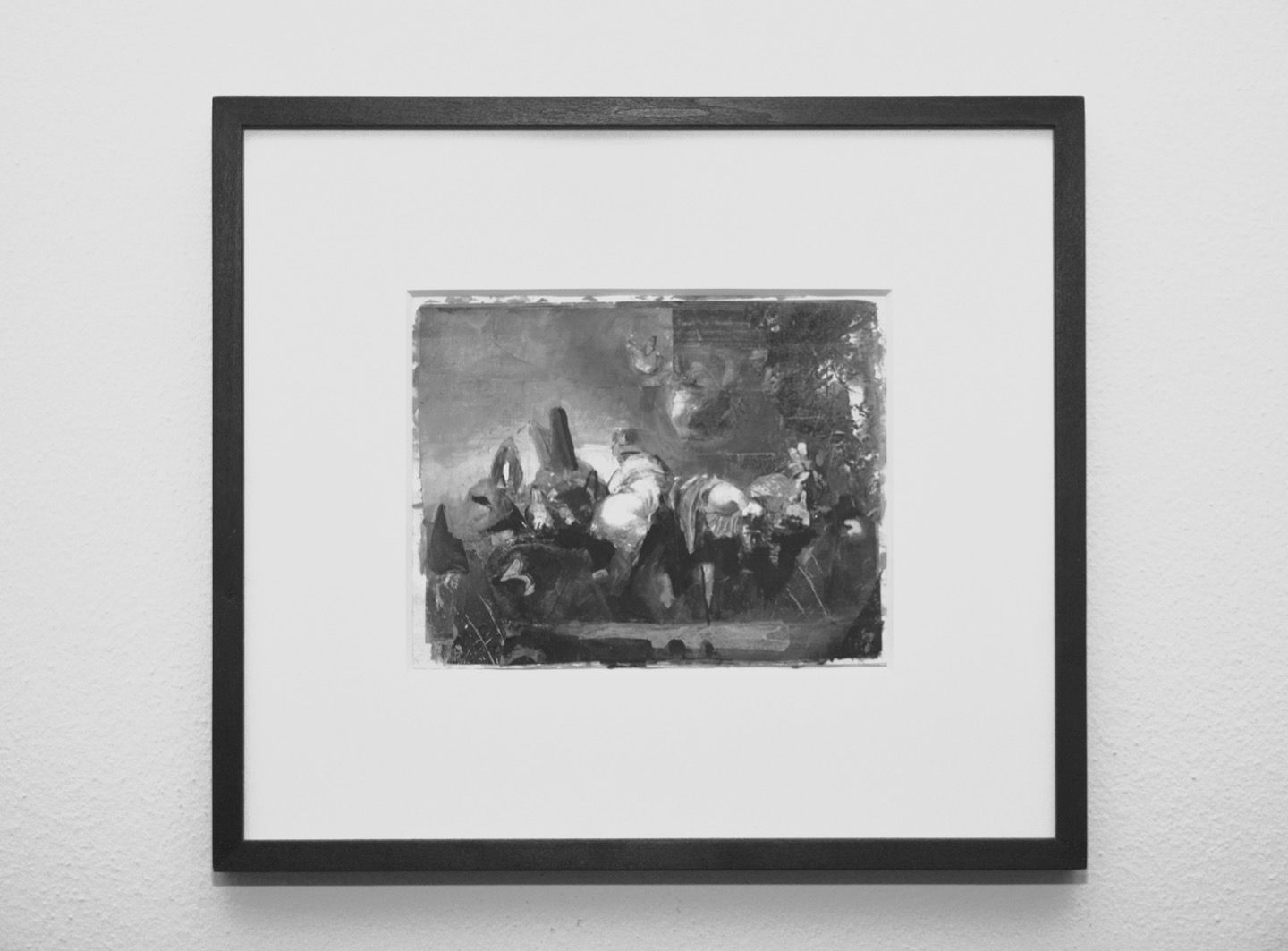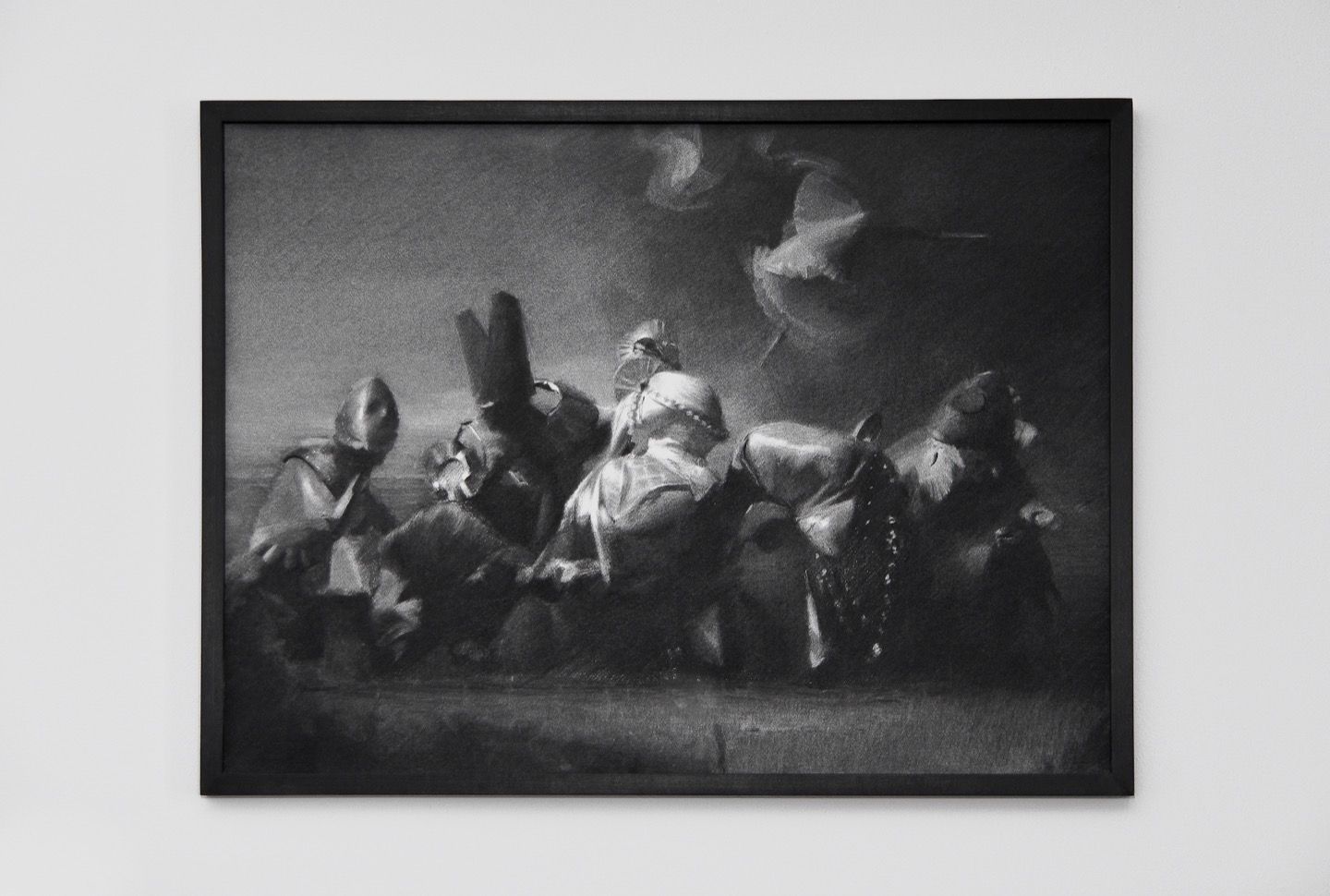Casa Clerico via del Bollo 5, Milano
March 2nd - 22nd, 2014
NICK DEVEREUX / FLAKTURM
Case Chiuse #00 by Paola Clerico
Dear Paola,
We spoke before about the large scale work called Flakturm I’m working on – the reconstruction of the Friedrichshain ‘flakturm’ destroyed in Berlin at the end of World War II . This was a gun tower where a series of important paintings had been moved from the Kaiser Friedrich Museum for safekeeping. The collection, documented in a series of 417 black and white photos, was destroyed in a fire in May 1945 during bombings by the allied forces. All the paintings were destroyed. I have been using the photos to make a ‘compressed’ version of the tower and it’s collection.
The final work will be monumental in proportions – 16 three metre wide oil canvases supported by a wooden scaffolding structure to make an octagonal tower. There are several stages of preparatory drawings, collages and sculptures through which I have been developing the paintings, and I think it would be interesting to work together and present the project at this point in its evolution. The collages have an interesting dimension to them – you feel the flatness of the illusion, as well as the sense of the object in the layering of the paper. They are preparatory works but have certain qualities not present in the final works, so an interesting introduction to the project.
To make the process clear:
I have archived the original photos into categories of subject matter and composition, then reassembled them into collages. These collages conserve aspects of the original works while obfuscating the representation within the images. They are subsequently translated into sculptural dioramas from which the large format works derive.
The final result will be both imposing and intimate. The structure acts as a monument to the destruction of the original masterpieces while the function of the architectural form is to intensify the psychological effect of the works by physically immersing the viewer within the illusionary potential of the work.
As you know my work often develops on the idea of readdressing images that no longer exist in their original state, but that have been documented visually or orally. I think it would be great to work together in presenting the process involved in this kind of research, where the relation between original and copy is at its rawest, as a prologue to the final work.
Look forward to hearing your thoughts.
Nick
